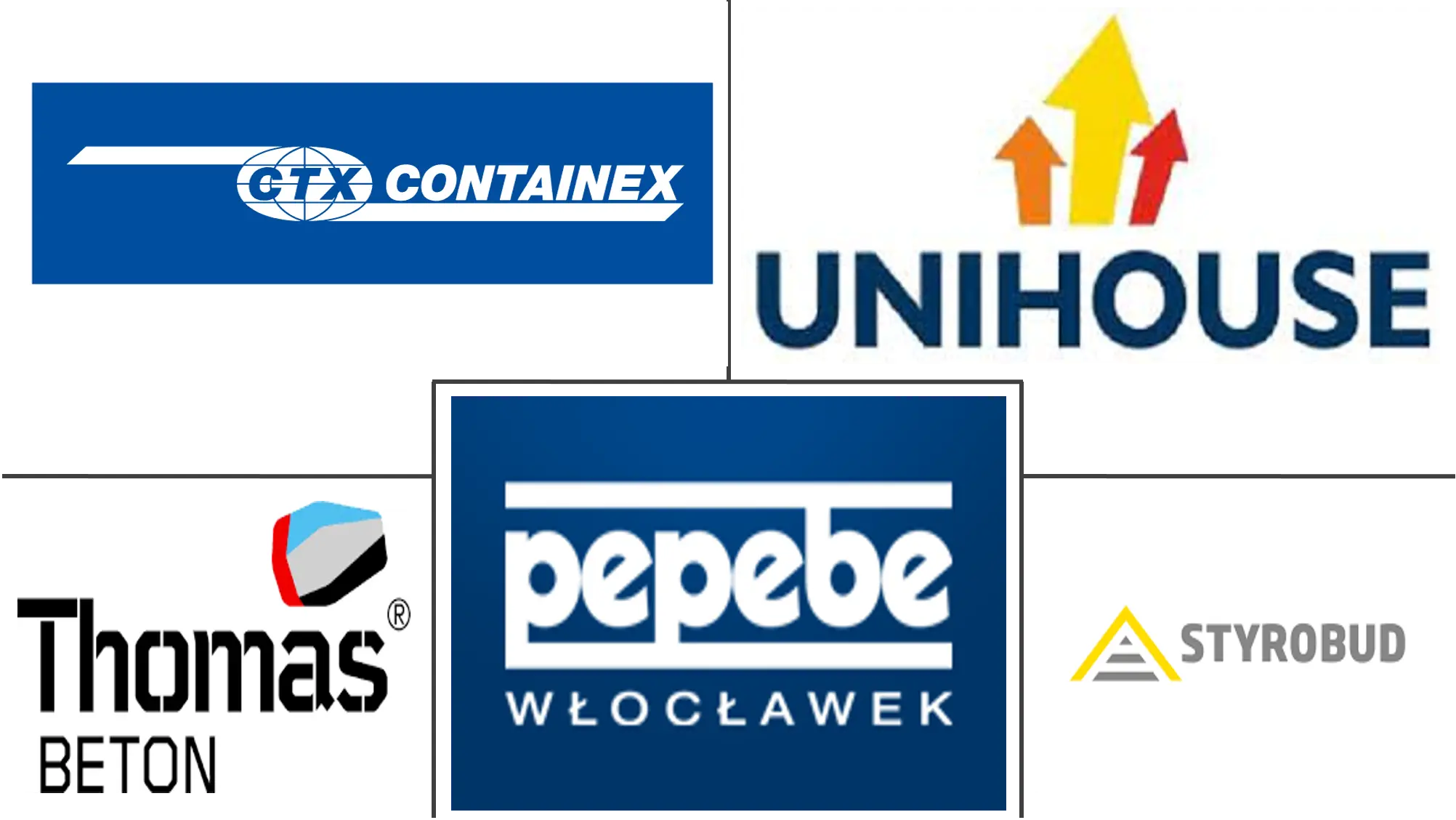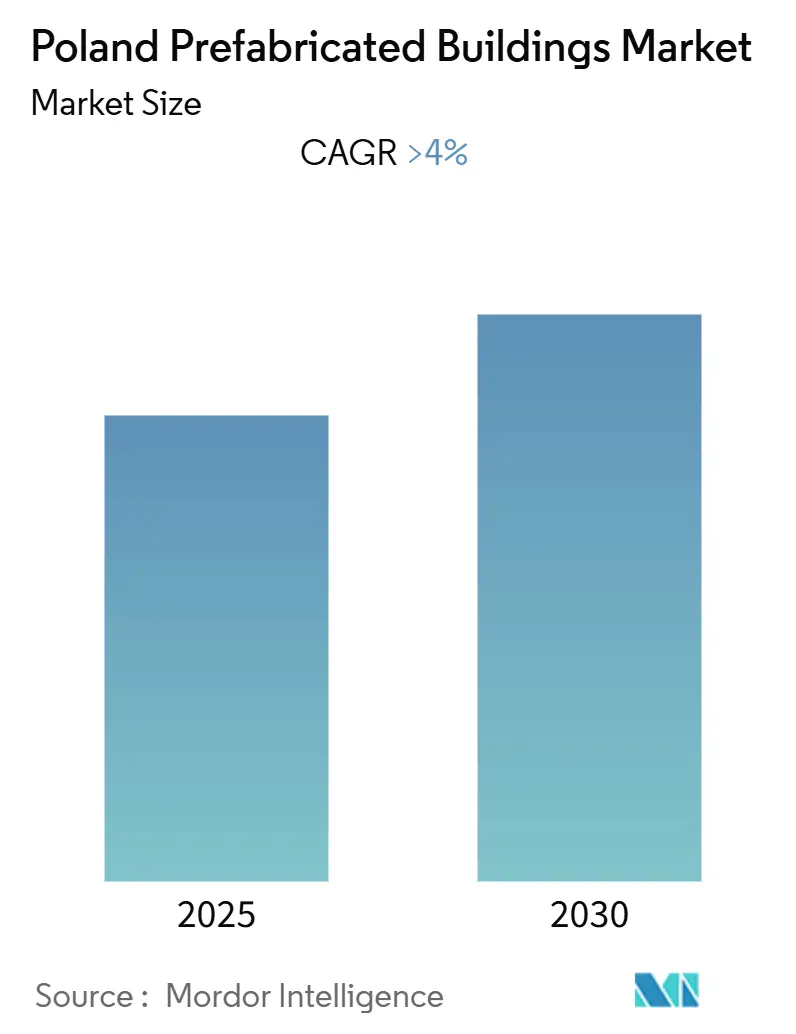
Poland Prefabricated Buildings Market Analysis by Mordor Intelligence
The Poland Prefabricated Buildings Market is expected to register a CAGR of greater than 4% during the forecast period.
- The Poland prefabricated buildings market is reportedly experiencing significant growth due to the increasing demand for sustainable and cost-effective construction solutions. Advancements in modular and timber-based prefabrication technologies are said to be playing a crucial role in shaping the market landscape by enabling quicker construction timelines and reducing environmental impact.
- Government investments in infrastructure and housing projects, along with rising awareness of energy-efficient buildings, are believed to be contributing to the market's expansion. The market is also being influenced by the growing need for temporary and emergency housing solutions, which is driving demand for prefabricated structures. Major players and investments in the sector are reportedly fostering innovation and further growth in the market.
- For instance, in early 2024, Poland's construction sector benefited from a USD 12.2 billion allocation from the EU under the National Reconstruction Plan (KPO). By mid-2024, USD 2.2 billion in grants had been disbursed, primarily targeting the energy sector. This funding is indirectly supporting the prefabricated buildings market by facilitating infrastructure projects that require efficient and sustainable construction methods.
- Also, in August 2024, a tender was initiated for constructing a 4.6-kilometer tunnel for High-Speed Rail in Lodz, Poland, as part of a larger megaproject overseen by the Polish government. This project, which includes the development of a new airport approximately 40 km southwest of Warsaw, is expected to create opportunities for prefabricated building solutions due to their efficiency and adaptability in large-scale infrastructure projects.
- Additionally, in June 2024, a distribution agreement was established for self-erecting tower cranes in Poland, with initial orders including advanced crane models. These developments are anticipated to enhance the capabilities of the prefabricated buildings market by providing advanced construction equipment tailored to meet the sector's needs.
- In conclusion, the Poland prefabricated buildings market is evolving rapidly, driven by technological advancements, government investments, and the growing demand for sustainable construction solutions. The integration of prefabrication in large-scale infrastructure projects and the adoption of innovative construction equipment are expected to further solidify the market's position in the coming years.
Poland Prefabricated Buildings Market Trends and Insights
Timber's Role in Shaping the Market
The increasing adoption of timber buildings is significantly influencing the evolution of the Poland prefabricated buildings market by providing sustainable and eco-friendly construction alternatives. Timber's lightweight nature is enabling faster construction processes and reducing transportation costs, which are critical factors in the prefabricated buildings market. Its compatibility with modular designs is enhancing flexibility and customization in construction projects, aligning with the market's demand for adaptable solutions. Additionally, timber buildings are addressing the growing need for energy-efficient and low-carbon construction methods, which is further driving the market's growth.
In October 2024, a prefabricated timber hospital was completed in Ostroda, marking a milestone in Poland's prefabricated buildings market. Initiated in 2023, the project involved the construction of a 2,400 m² facility using timber, showcasing the material's potential in large-scale prefabricated construction projects. This development highlights how timber is contributing to the diversification and innovation within the market.
In November 2024, a modular structure made from certified solid wood and ecological materials was introduced, demonstrating the application of timber in modern prefabricated housing solutions. Such projects are reinforcing the role of timber in advancing the prefabricated buildings market in Poland. Additionally, modular timber buildings offering sustainable and flexible construction solutions with reduced CO₂ footprints are gaining traction. These developments emphasize environmentally friendly construction practices, which are becoming a cornerstone of the market's evolution.
In conclusion, the Poland prefabricated buildings market is witnessing significant growth and transformation, driven by the adoption of timber as a sustainable construction material. Timber's unique properties and alignment with eco-conscious trends are fostering innovation, attracting investments, and expanding the market landscape. This shift is positioning Poland as a key player in the global prefabricated buildings market.
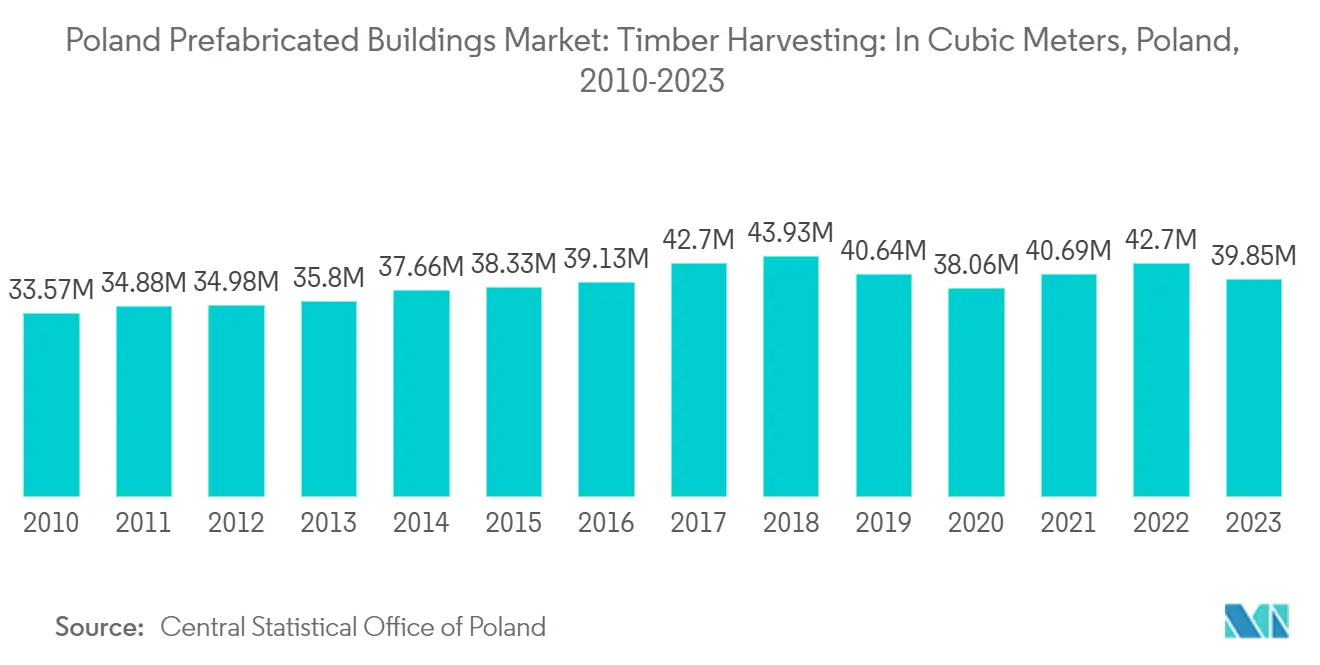
Market Growth Driven by Infrastructure Development
The growth of the infrastructure industry in Poland is reported to be significantly influencing the prefabricated buildings market. The increasing demand for efficient, cost-effective, and rapid construction methods is said to be driving the adoption of prefabricated units. As infrastructure projects in the country expand, the need for sustainable and modular building solutions is reportedly rising, further boosting the market.
Investments in infrastructure are believed to be fostering technological advancements, making prefabrication a more viable and attractive option. Both government initiatives and private sector involvement are noted to be recognizing the benefits of reduced construction timelines and lower costs, which is contributing to the growing market share of prefabricated buildings in residential and commercial applications.
Reports indicate that projects such as the Nysa Cathode Active Material Manufacturing Plant are playing a role in shaping the prefabricated buildings market in Poland. Construction of this plant, which began in Q4 2024 in Opole Voivodeship, is expected to utilize prefabricated solutions to meet its ambitious timeline. The project aims to achieve an annual production capacity of 160 GWh by 2030, aligning with the production needs of approximately 2.2 million electric vehicles. The plant's construction is anticipated to conclude by Q3 2025, showcasing the efficiency of prefabricated methods in large-scale industrial projects.
Additionally, Poland's nuclear power expansion is reported to be another factor influencing the prefabricated buildings market. The country has entered into an agreement with Canada to enhance cooperation on nuclear power, with plans to construct 24 small modular reactors (SMRs) across six sites by 2030. These projects are expected to rely on prefabricated building techniques to ensure timely and cost-effective implementation, further driving the adoption of modular construction solutions in the energy sector.
In conclusion, the prefabricated buildings market in Poland is evolving as a result of the country's expanding infrastructure projects and increasing focus on sustainable and efficient construction methods. The integration of prefabricated solutions in industrial and energy-related developments highlights their growing importance in meeting Poland's construction demands. This trend is expected to continue shaping the market landscape in the coming years.
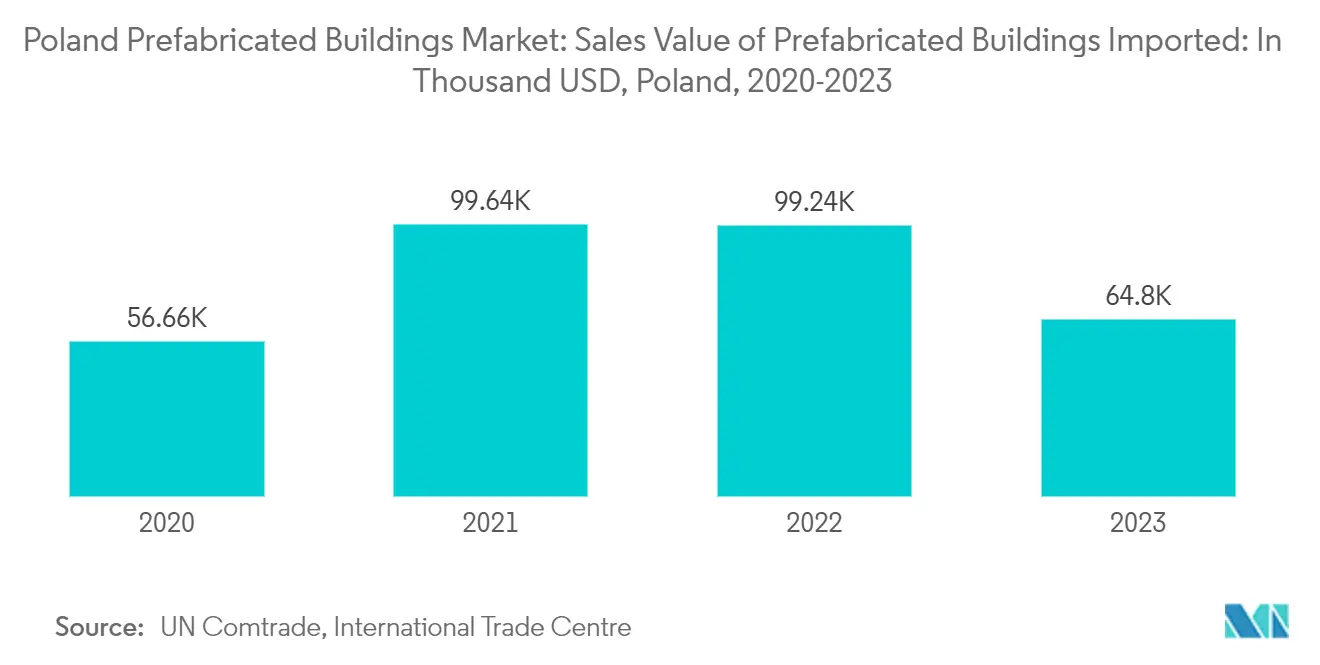
Competitive Landscape
Poland's prefabricated buildings market, characterized by a medium level of concentration, is witnessing growth driven by a rising demand for efficient and sustainable construction solutions. This burgeoning demand intensifies competition, leading to a semi-consolidated market structure where both established firms and newcomers vie for prominence. Notable players like Containex, Unihouse, Thomas Beton, Styrobud, and Pepebe command significant market shares.
It's important for businesses to be able to keep going, grow into other areas, and get domestic demand back up. Companies can use effective production technologies to keep product costs low and reduce risks, which helps them make more money.
Poland Prefabricated Buildings Industry Leaders
-
Containex
-
Unihouse
-
Thomas Beton
-
Styrobud
-
Pepebe
- *Disclaimer: Major Players sorted in no particular order
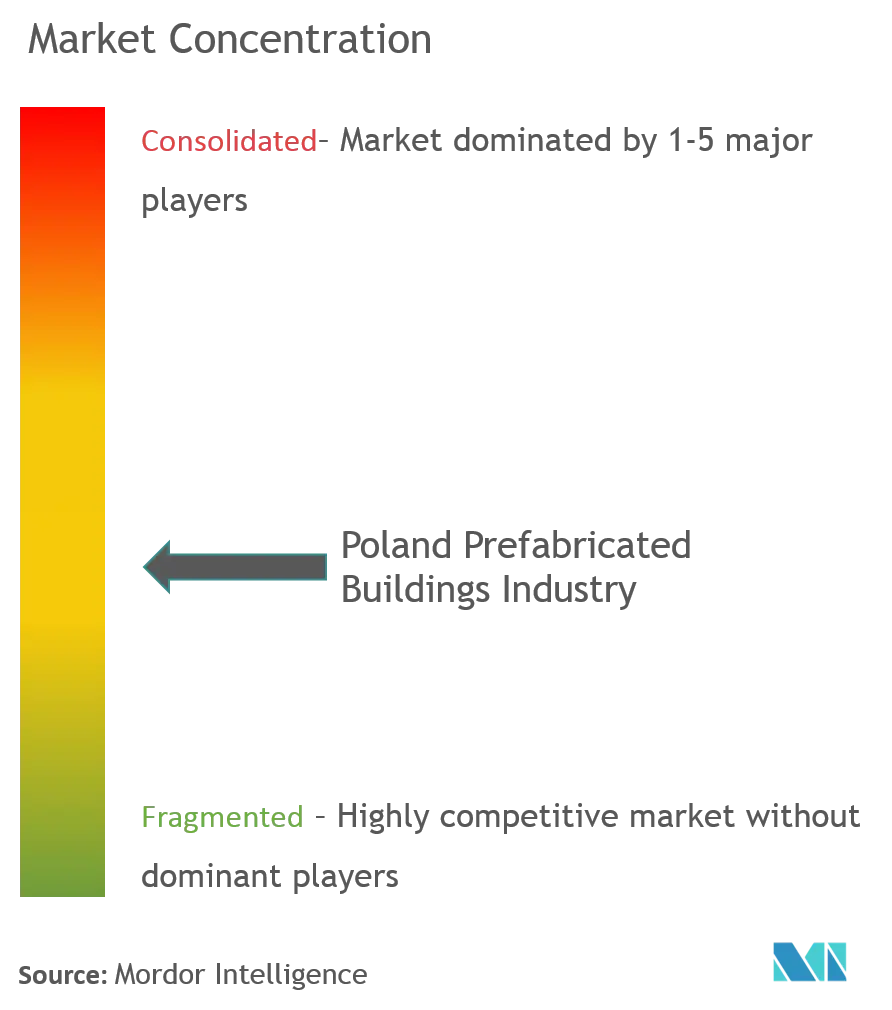
Recent Industry Developments
- January 2025: GMM Pfaudler Limited reportedly announced that its German subsidiary, Pfaudler GmbH, had signed an agreement to acquire a 51% stake in a Polish limited liability company. This development is expected to play a significant role in the Poland Prefabricated Buildings Market by introducing advanced manufacturing capabilities and boosting local production. The agreement, finalized on December 20, 2024, involves an investment of PLN 12.2 million (approximately USD 3.1 million), funded through internal accruals. Such investments are likely to enhance the availability of prefabricated building components, supporting the market's growth and innovation.
- January 2024: The family-owned Swedish group, Thomas Concrete Group, based in Gothenburg, has been steadily expanding through three international acquisitions. These acquisitions, involving seven concrete plants with combined sales of approximately SEK 250 million (USD 22.60 million), span Germany and the USA. While the acquisitions primarily strengthen the group's position in these regions, the increased production capacity and expertise could indirectly influence the Poland Prefabricated Buildings Market by fostering cross-border collaboration and improving the supply of high-quality concrete materials essential for prefabricated construction.
Poland Prefabricated Buildings Market Report Scope
The Prefabricated Buildings Market refers to the industry focused on designing, manufacturing, and assembling building components off-site, which are then transported and installed at their final location. It includes modular, panelized, and pre-engineered structures utilized in residential, commercial, and industrial sectors. The market's growth is driven by the demand for cost-effective, time-efficient, and sustainable construction solutions. Key players include construction firms, material suppliers, and modular housing manufacturers. Trends in this market include the adoption of eco-friendly materials, advancements in 3D printing, and the integration of smart building technologies.
Poland's Prefabricated Buildings Industry is Segmented by material type (concrete, glass, metal, timber, and other material types) and by application (residential, commercial, and other applications [industrial, institutional, and infrastructure]). The report offers market size and market forecasts for Poland Prefabricated Buildings Market in value (USD).
| Concrete |
| Glass |
| Metal |
| Timber |
| Other Material Types |
| Residential |
| Commercial |
| Other Applications (Industrial, Institutional, and Infrastructure) |
| By Material Type | Concrete |
| Glass | |
| Metal | |
| Timber | |
| Other Material Types | |
| By Application | Residential |
| Commercial | |
| Other Applications (Industrial, Institutional, and Infrastructure) |
Key Questions Answered in the Report
What is the current Poland Prefabricated Buildings Market size?
The Poland Prefabricated Buildings Market is projected to register a CAGR of greater than 4% during the forecast period (2025-2030)
Who are the key players in Poland Prefabricated Buildings Market?
Containex, Unihouse, Thomas Beton, Styrobud and Pepebe are the major companies operating in the Poland Prefabricated Buildings Market.
What years does this Poland Prefabricated Buildings Market cover?
The report covers the Poland Prefabricated Buildings Market historical market size for years: 2019, 2020, 2021, 2022, 2023 and 2024. The report also forecasts the Poland Prefabricated Buildings Market size for years: 2025, 2026, 2027, 2028, 2029 and 2030.
Page last updated on:
Poland Prefabricated Buildings Market Report
Statistics for the 2025 Poland Prefabricated Buildings market share, size and revenue growth rate, created by Mordor Intelligence™ Industry Reports. Poland Prefabricated Buildings analysis includes a market forecast outlook for 2025 to 2030 and historical overview. Get a sample of this industry analysis as a free report PDF download.
